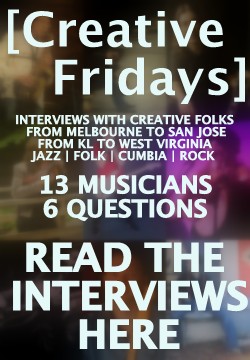23 Epic Guitar Lessons on azsamadlessons.com
 Wednesday, December 23, 2015 at 7:00PM
Wednesday, December 23, 2015 at 7:00PM
Hello there!
2015 has been a wonderful year for my NEW azsamadlessons.com website. The lesson library is growing gradually and there's more in the works. I want to thank you for being a supporter of the website.
There's more slated for 2016 that I can't reveal yet but you'll see gradually. To round up 2015, here's a recap of all the 23 lessons on the site so far organized for you!
[WORKSHOPS: LEARNING FROM THE MASTERS]
10 Things I Learned From The Jack Thammarat Kuala Lumpur Workshop
http://azsamadlessons.com/?p=150
10 Things I Learned From The Guthrie Govan Kuala Lumpur Workshop
http://azsamadlessons.com/?p=97
[GENERAL MUSIC TIPS]
How do you get the most out of a jazz festival?
http://azsamadlessons.com/?p=119
[GEAR]
How to find the right guitar for you
http://azsamadlessons.com/?p=136
[JAZZ GUITAR]
My Jazz Guitar Practice Routine
http://azsamadlessons.com/?p=138
How do you play jazz chords on guitar?
http://azsamadlessons.com/?p=114
How to use chromatic notes in your guitar solos
http://azsamadlessons.com/?p=128
How to solo on Autumn Leaves: Part 1
http://azsamadlessons.com/?p=78
In chord melody arrangements, how do you do guitar fills?
http://azsamadlessons.com/?p=59
What are Drop-2, Drop-3 and Drop-2&4 Voicings for guitar?
http://azsamadlessons.com/?p=38
Beyond Scales & Licks: How to create cool solos!
http://azsamadlessons.com/?p=37
[PRACTICE SECRETS]
How to become a better guitarist in just 10 minutes a day!
http://azsamadlessons.com/?p=120
3 things I didn’t realize when I started playing guitar
http://azsamadlessons.com/?p=125
How do you jam with other guitarists?
http://azsamadlessons.com/?p=123
How do you overcome stage fright?
http://azsamadlessons.com/?p=94
[SCALES]
How to Develop Creative Guitar Licks from Scales
http://azsamadlessons.com/?p=82
How To Learn Scales On Guitar
http://azsamadlessons.com/?p=75
[TECHNIQUE LESSONS]
How to play fast on guitar?
http://azsamadlessons.com/?p=130
Beginner Guitar: 7 Tips To Ease Your Barre Chords
http://azsamadlessons.com/?p=92
Folk Fingerstyle Strumming Lesson
http://azsamadlessons.com/?p=72
Intro to Odd Meter Fingerstyle Guitar Patterns
http://azsamadlessons.com/?p=69
[MUSIC THEORY]
Pitch Axis meets Modulation: A Joe Satriani Inspired Lesson
http://azsamadlessons.com/?p=58
[UKULELE LESSONS]
50 Blues Ukulele Licks
http://azsamadlessons.com/?p=31
Wanna learn something in particular in 2016? Please let me know by emailing me a question! =)
Thanks again. =)
Best wishes,
Az


